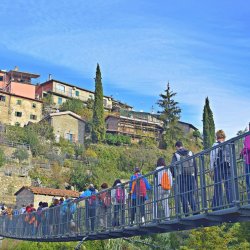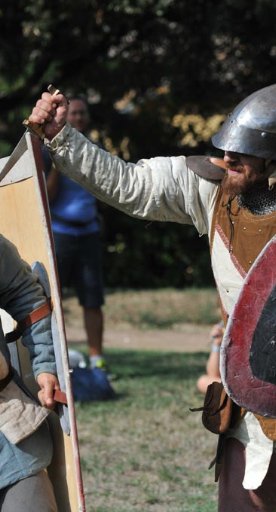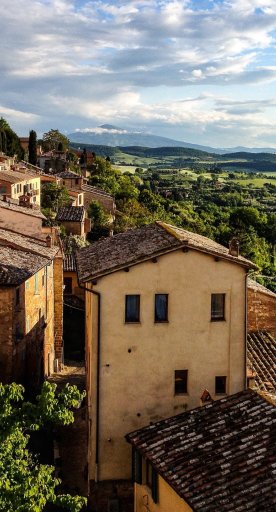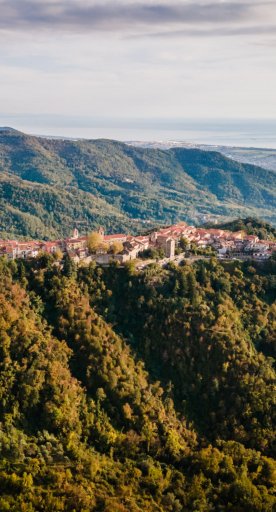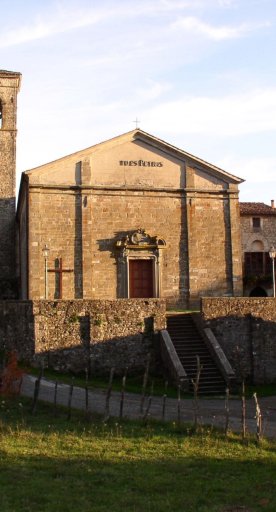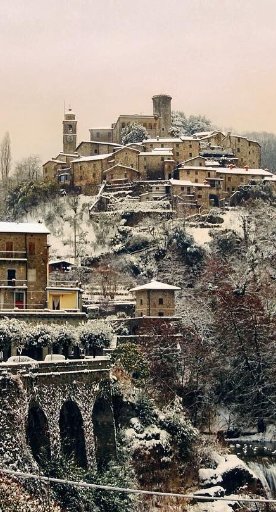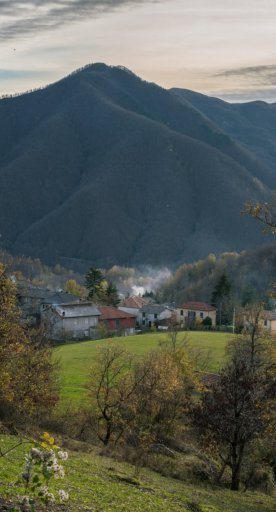

Trekking with a view: 10 ideas for walking among beauty
Breathtaking views and unspoiled nature just a stone's throw away from the most beautiful villages
For those who love traveling and being surprised by the ever-changing landscapes, here are some tips on how to combine a pleasant visit to the beating heart of Tuscany with a walk to discover the most exciting itineraries.
It's just a stone's throw away from ancient history to the wilderness. All you need to do is put on your hiking shoes and go!
Here are our recommendations for 10 scenic walks.
-
1.Poppi
-
2.Vinci
-
3.Anghiari
-
4.Sovana
-
5.Volterra
-
6.Campiglia Marittima
-
7.Barga
-
8.Uzzano
-
9.Fiesole
-
10.Reggello
Poppi
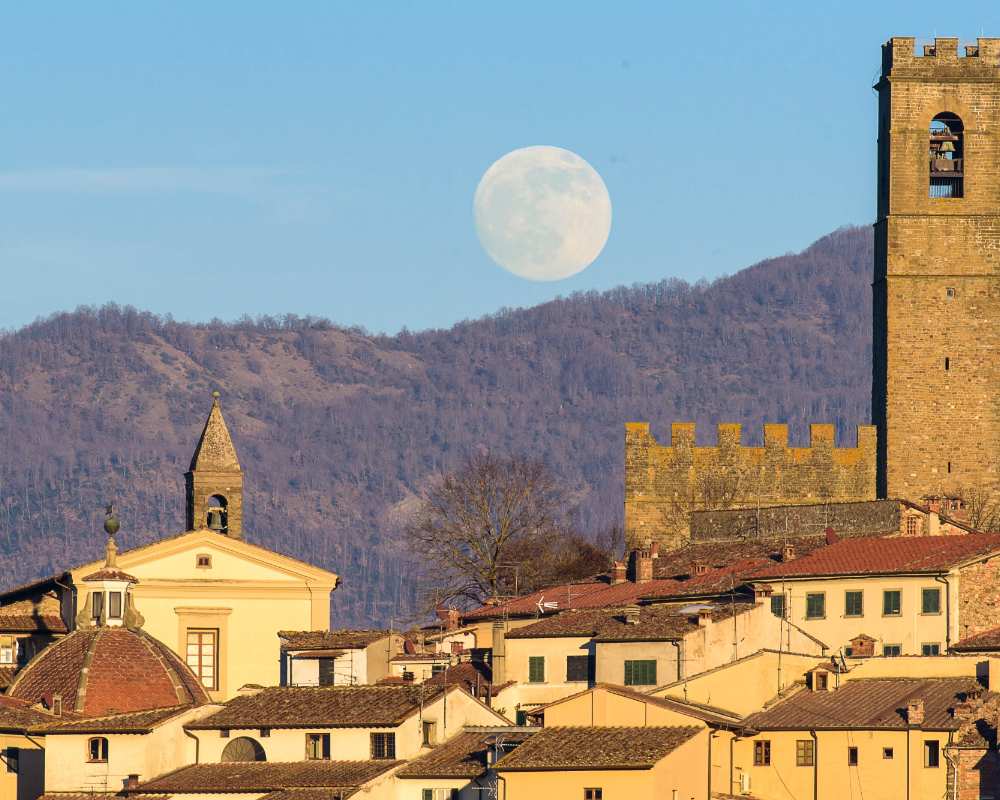
Nestled in the magical beauty of Casentino, Poppi is a village that fully represents the characteristics of this area: unspoiled nature, history and spirituality.
Starting from its famous Castle, a historical symbol of Casentino with an imposing structure well preserved over the centuries, you can visit the little town, also included in the list of the most beautiful villages in Italy, and enjoy its charm.
In addition to the walk with a view through the historic center, it is possible to take an actual trekking route along the Via di Francesco, a path that retraces the fundamental stages of the life of St. Francis and connects the Basilica of Santa Croce in Florence to the Sanctuary of La Verna: the southern part of the route follows the left bank of the Arno, passing through Poppi. This route corresponds to the Via Florentia Romana, an ancient medieval road that was mostly important for the commercial exchanges between the powerful family of Counts Guidi and Florence.
Vinci
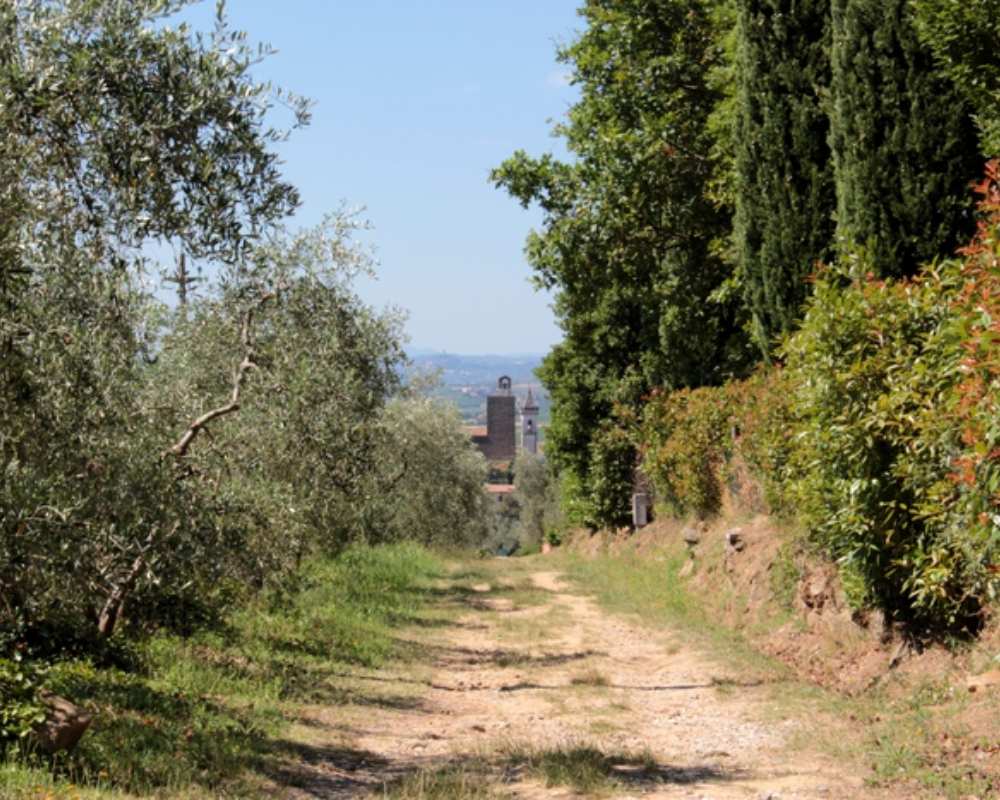
Internationally known as the birthplace of the great Italian Renaissance genius Leonardo da Vinci, life in Vinci revolves entirely around the eclectic Renaissance artist: the town itself has become an extensive museum dedicated to the genius, with the Leonardo Museum and the Library, a point of reference for scholars from all over the world.
In addition, you can reach the Leonardo’s Birthplace by following the Strada Verde (Green Way), a nature trail suitable for the whole family: in fact, by following the wooden signs, you will reach the village of Anchiano, where the artist, scientist, architect and engineer saw the light of day on April 15, 1452.
Anghiari

A few kilometers from Arezzo, in the Tuscan Valtiberina, the small village of Anghiari was the scene of the famous battle, in which, on June 29, 1440, Florentine troops defeated Milanese troops, thus allowing Florence to take over the government of the city.
Today, Anghiari is considered one of the most beautiful villages in Italy. It is spread along the steep and characteristic "ruga" (line) that crosses it completely, making it truly unique.
If you want to immerse yourself in the woods and mountains of this corner of Tuscany, you can follow the Via di Francesco from La Verna to Anghiari: a route of more than 60 kilometers that crosses Sansepolcro, the Hermitage of Montecasale, the Alpe della Luna Nature Reserve and the summit of Mount Calvano. The whole itinerary is surrounded by greenery and walking through it requires some hiking effort.
Sovana
Nestled between two gorges, Sovana preserves the majestic ruins of the Aldobrandesque fortress, the Praetorian Palace, the Loggia del Capitano and the thousand-year-old cathedral.
Sovana, too, is included in the prestigious list of the most beautiful villages in Italy and has a real treasure: the monumental area of the “Città del Tufo” Archaeological Park.
If you want to immerse yourself in history, the Vie Cave, large roads dug into the tuff hills by the Etruscans, is between Sovana and Sorano.
It is a unique sight in the world whose actual function we still don't know; for sure walking these winding paths carved into the surprisingly intact tuffaceous rock remains a breathtaking experience.
Don't miss the Via Cava di San Sebastiano, its walls over twenty meters high, and the Cavone.
Volterra

Famous for its alabaster, Volterra is a town built on a hill: with its double walls, the Etruscan and the 13th-century walls, it has a medieval appearance, and it is still possible to experience the atmosphere of yesteryear.
The ancient gates, the Etruscan acropolis, the Roman theater and the medieval palaces with their crenellated towers are just a few of the city's attractions: all around is the fascinating and wild Valdicecina, with its rough but fertile nature.
If you love hiking, the Montenero Regional Nature Reserve, a green island nestled among the agricultural lands of the surrounding hills, is just a short drive from Volterra.
The picturesque landscape offers beautiful waterfalls and woods with numerous species of small birds.
The route from Volterra to Ulignano is about 9 kilometers long and is quite challenging due to the high altitude.
Campiglia Marittima
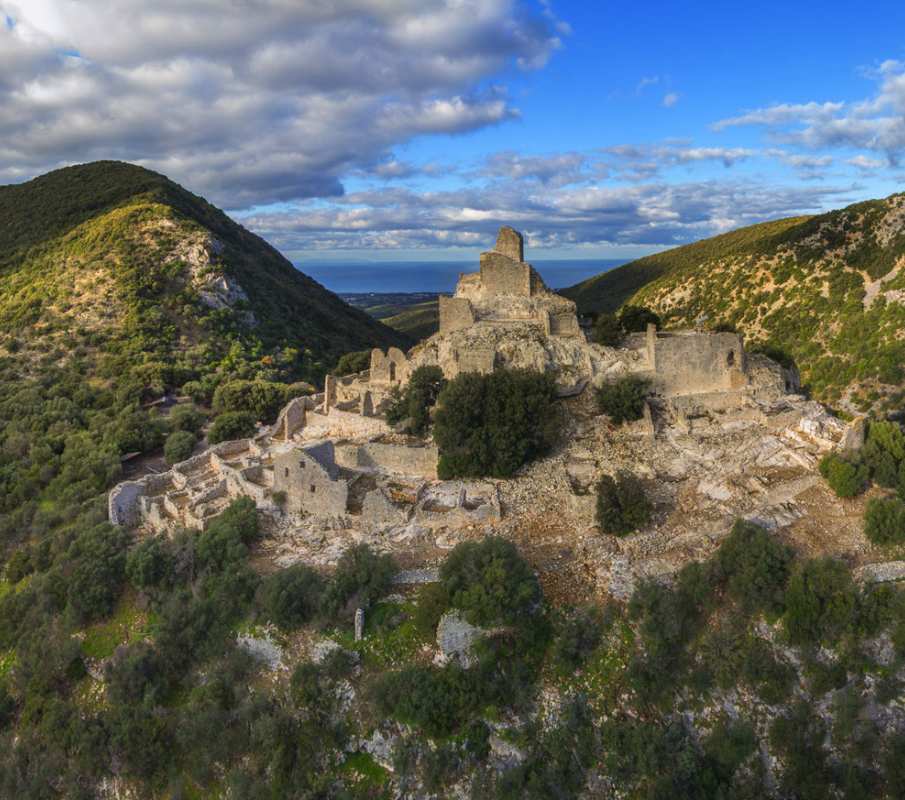
Campiglia Marittima is one of the most picturesque villages in the Val di Cornia: perched on a hill overlooking the Etruscan Coast, it offers a sensational view of the Tuscan archipelago and the surrounding countryside.
On the highest hill of Campiglia stands the Rocca, which includes the keep, the ancient cistern, the imposing crenellated wall and the aqueduct from the 1930s.
If you prefer more challenging itineraries, you can visit the San Silvestro Archaeological Mines Park. Located just a few kilometers from the town and covering 450 hectares, it includes museums, mining galleries, archaeological mining trails and Rocca San Silvestro, the ancient village of miners founded in the Middle Ages to exploit copper, lead and silver deposits.
Barga

Between the Tuscan-Emilian Apennines and the Apuan Alps, Barga is a medieval village rich in ancient traditions, listed among the most beautiful villages in Italy.
Protected by a wall and accessible through three gates, the Castle dominates Barga.
Walking through irregular alleys and small squares, you will discover a lively and picturesque town that houses works of art and artistic traditions. Do not miss a visit to the Cathedral of San Cristoforo or, during the summer, one of the many events of the famous Barga Jazz Festival.
Barga is also one of the stops on the Via del Volto Santo, a path that starts in Pontremoli - home of the famous Statue Stele - and crosses Tuscany for about 150 kilometers, touching Lunigiana, Garfagnana and the Mid Serchio Valley.
The waypoint from Castelnuovo Garfagnana to Barga is about 150 kilometers long and winds through a fascinating rural landscape. Moreover, around Barga, the remains of trenches and tombstones remind us of the partisan fight during World War II.
Uzzano

Uzzano is one of the medieval jewels of the Valdinievole, beloved even by Maestro Puccini, who composed the third and fourth acts of La Bohème right here.
The Castle is undoubtedly one of the town's main attractions, along with the medieval historic center on the hill: from here, the view of the valley is truly spectacular.
From this point, you can reach the Cammino di San Jacopo, a route from Florence to Livorno that crosses several towns and villages rich in history and charm: the leg that passes through Uzzano connects Pistoia to Pescia, offering unique views and splendid nature, is easy to travel and is about 25 kilometers long.
Fiesole
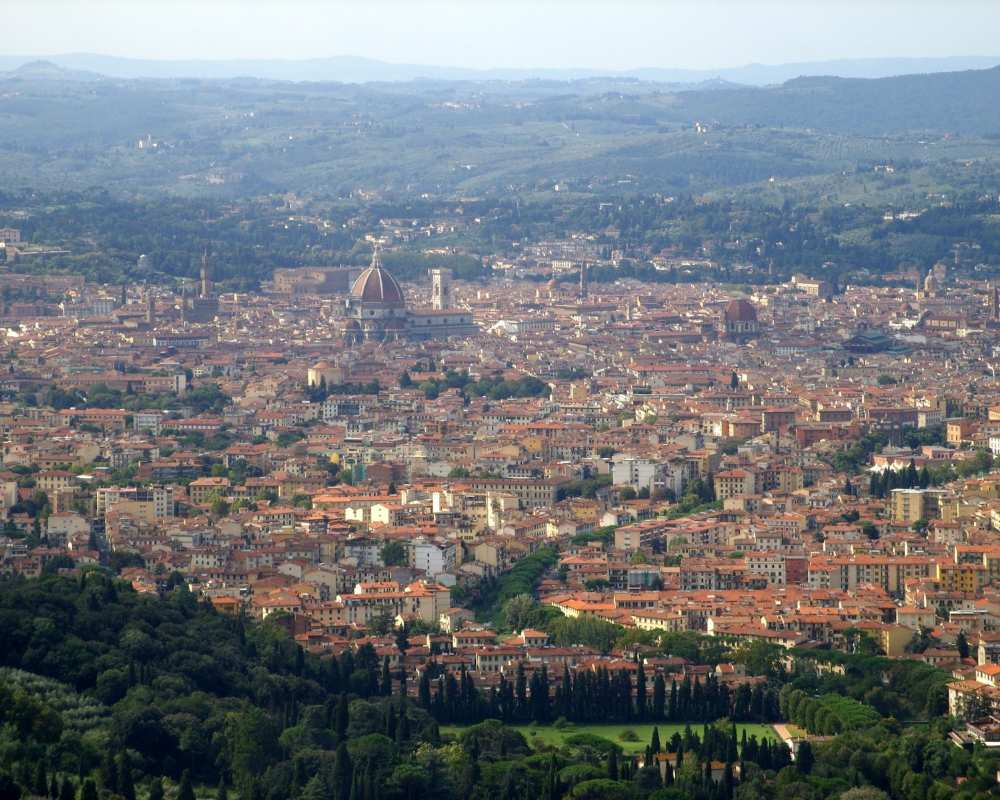
Fiesole needs no introduction, thanks to its privileged position and ancient history. It has always been a favorite of literary and intellectual circles, and it offers an incomparable view of Florence and an archaeological area that testifies to its important past.
Walking here is a truly unforgettable experience, thanks also to the different panoramic points. If you love trekking and nature, there is nothing better than to go to Monte Ceceri, characterized by serena stone caves since at least the 15th century. The Park of Monte Ceceri covers an area of 44 hectares and includes historical sites, such as the Cava del Braschi and the Cava Sarti, a vast open-air cave just below the Panoramic Square named after Leonardo.
Reggello
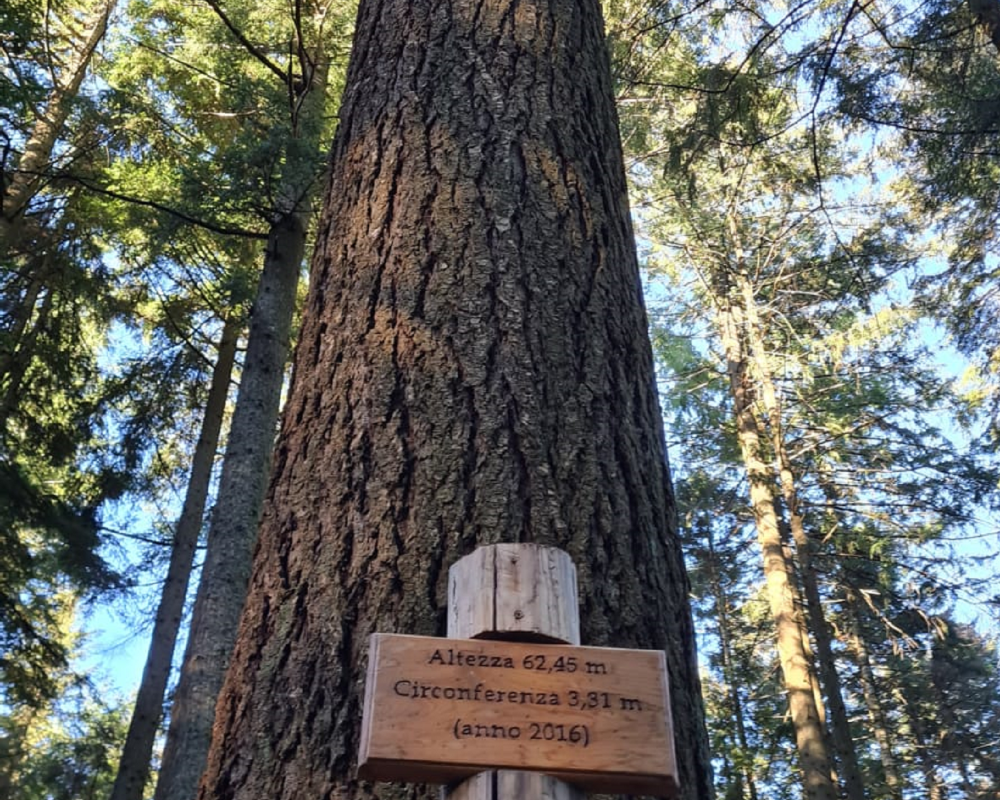
Reggello is one of the places best known to Florentines because of its location: it is located on the Florentine mountains, between the northwestern slope of Pratomagno and the woods of Vallombrosa, making it an ideal summer destination for those seeking respite from the city’s heat. The village is very ancient, even if its current territorial layout is from the 19th century. You can reach the Anello dei Giganti (the Giants’ Ring), an itinerary suitable for everyone whose starting point is along the road that from Vallombrosa lead to the Consuma Pass. It is so called because it is home to the tallest trees in Italy, two American firs over 60 meters high.
